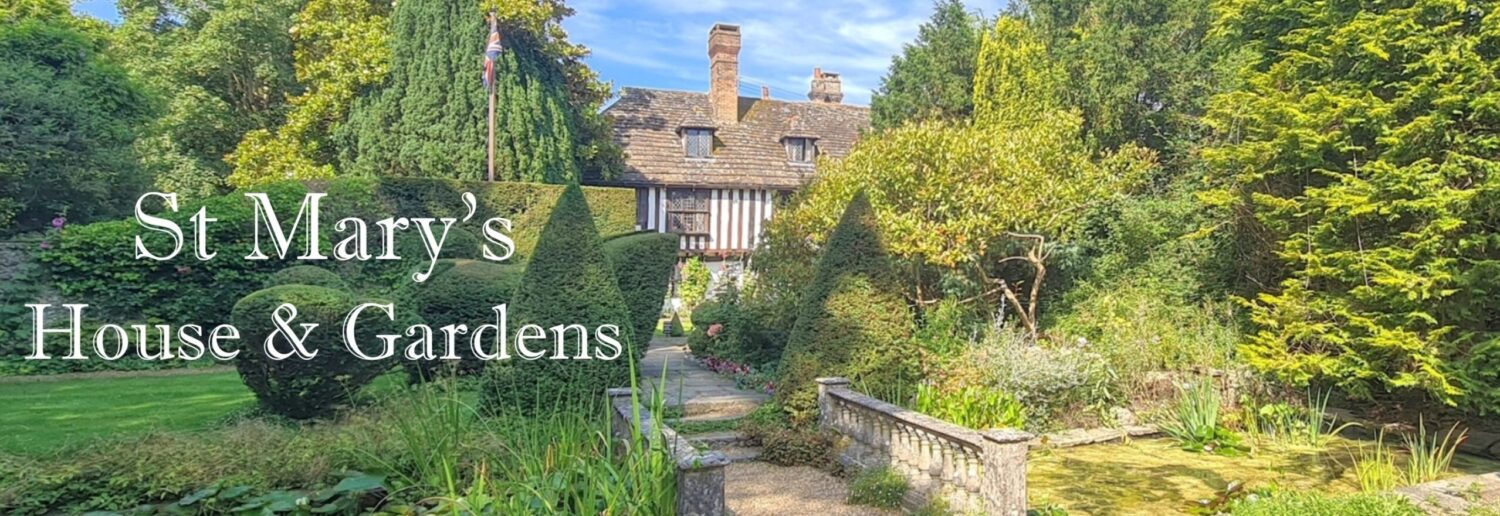The History of St. Mary’s
The origins of St. Mary’s go back to the 12th century, and the days of the Knights Templar, when five acres of land in the downland village of Bramber were given to them by the widow of Philip de Braose, following his death in 1125. The present building was constructed c1470 by William of Waynflete, Bishop of Winchester and founder of Magdalen College, Oxford, as an inn for pilgrims on their way to the tomb of St. Thomas of Canterbury.
Through the centuries, the house has had a number of distinguished owners. Of note, in the 1890s, is Hon. Algernon Bourke, owner of White’s, the celebrated gentleman’s club in St. James’s, London. He along with his beautiful wife, Gwendolen Sloane-Stanley, were the inspiration for two of the characters in Oscar Wilde’s famous play, The Importance of Being Earnest, which he wrote while staying locally in Worthing.
In 1907, St. Mary’s was sold to the wealthy socialite, Alfred Musgrave.
In 1946, the house was saved from demolition by Dorothy Ellis. She lived there for some thirty-five years. After which it was bought by Paul Smart, a lepidopterist and author of an encyclopedia of butterflies. He owned it for just a few years.
The current owners, Peter Thorogood and Roger Linton purchased the house in 1984 after it had been left empty and at risk. Peter, an author and composer, and Roger, a designer and landscape gardener, brought together valuable complementary skills. They immediately embarked upon a long and dedicated programme of restoration of the house which at the time was empty and in a very poor condition. Over the 40+ years they have lived in the house, they have also been able to regain important land that had previously been sold off. Reunifying important parts of the original estate. They have therefore not only saved and restored the property but also significantly enhanced the size of the St Mary’s estate, and the extent of the beautiful gardens. In recognition of their services to the arts and heritage they were both awarded the MBE in the Queen’s 80th Birthday Honours, 2006.
Peter and Roger have been joined in their efforts by a remarkable group of dedicated friends and volunteers who help keep the estate going and provide a warm friendly welcome to the many visitors each year. If you visit and meet them please take time to thank them for their dedicated efforts.
Click here to find out more about the Restoration of St. Mary’s
Meet the owners
 Roger Linton, MBE, has many family links with Sussex and with St. Mary’s in particular, going back very many years. He has relatives who lived in Bramber and are buried in St Nicholas Church in the grounds of Bramber Castle.
Roger Linton, MBE, has many family links with Sussex and with St. Mary’s in particular, going back very many years. He has relatives who lived in Bramber and are buried in St Nicholas Church in the grounds of Bramber Castle.
Roger studied at Leicester College of Art, then at the Royal College of Art in London, where he trained as a designer, specialising in ceramics. Roger went on to teach art and design at Thanet Technical College and later at Brighton College of Technology, at the same time developing his talents as painter and sculptor following his keen interest in antique china restoration.
In 1981, Roger Linton designed and made a complete panelled library for Peter Thorogood’s home in Kensington to house the unique Thomas Hood collection, now at St. Mary’s. His abiding interest in architecture and art history was put to good use in his restoration of the Linton family home – a 15th century timber-framed hall-house in Suffolk – providing him with invaluable expertise in the considered conservation of an English vernacular building such as St. Mary’s.
Peter Thorogood, MBE, is an author and composer whose early writings grew out of his love for the East Anglian countryside of his childhood. He studied piano and composition at the Guildhall School of Music, then read Modern Languages at Trinity College, Dublin, at the same time continuing his musical studies at the Royal Irish Academy of Music.
Following his graduation from Dublin, Peter Thorogood was appointed to the British School of Milan, eventually becoming its Vice-Principal. He also managed to make time for continuing his studies in piano and composition. He travelled extensively through Europe and the Middle East, and taught in Germany, Israel, Poland and Greece as visiting lecturer with the British Council.
Peter Thorogood has been Radio Talks Critic for the BBC magazine, The Listener, published three collections of his own poetry, and delivered a number of papers on his researches into the life and work of Thomas Hood. He has given many recitals of music and poetry, including his own compositions, in and around London. Since 1984 he has devoted his energy to the restoration of St. Mary’s, where the Music Room has proved to be the perfect setting for his successful series of concerts and recitals. He has still found time in the last few years to complete and publish two important new books. One about the Theatre Royal Drury Lane, and the other about Thomas Hood, one of his life long passions.
